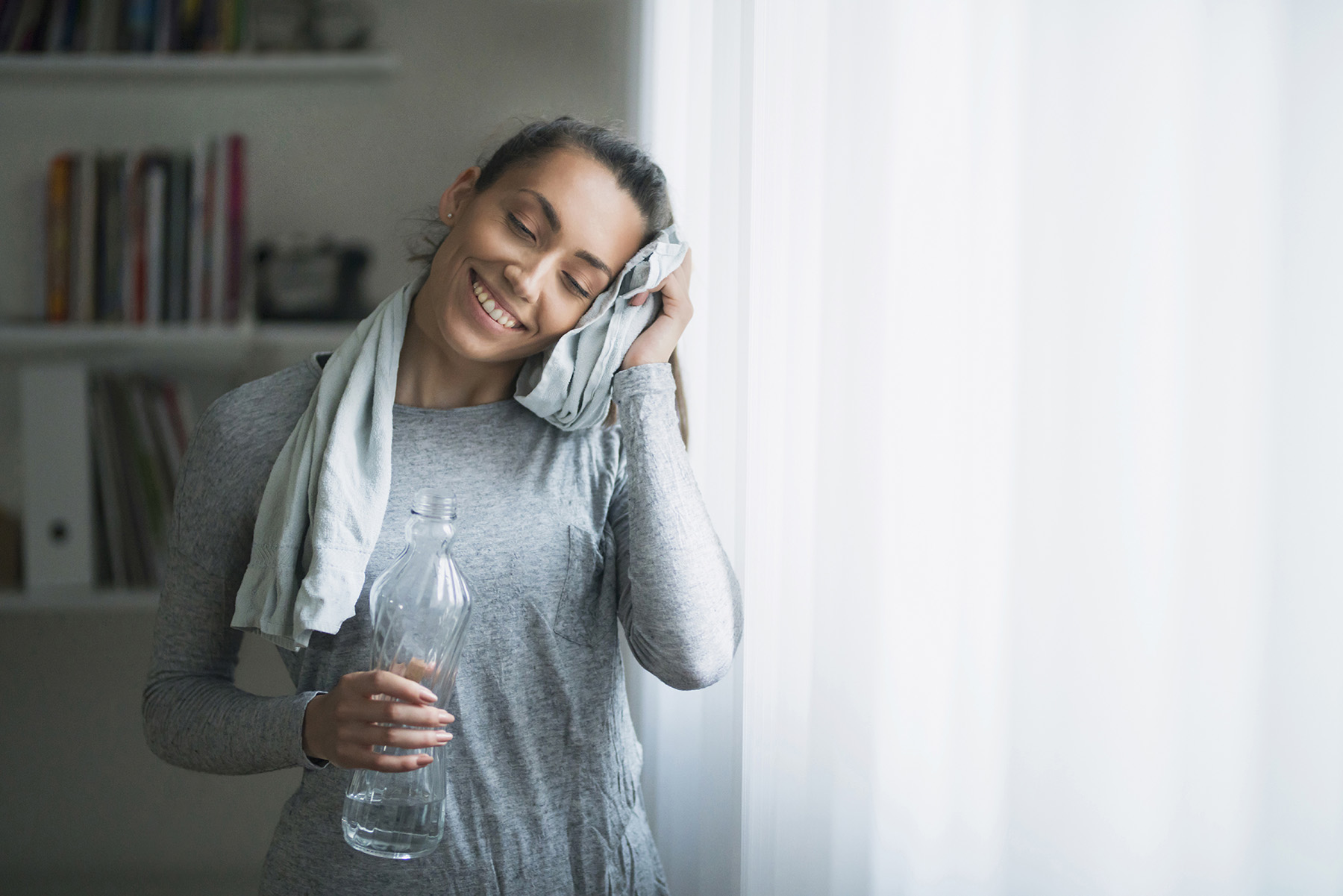Exercise Safely in the Summer Heat

It’s summer in South Florida and that means it’s hot and humid. While others may stop all outdoor activities that don’t include dipping into a body of water, that isn’t really an option for some of us.
Hydrate, hydrate, hydrate
Not surprisingly, this is at the top of the list. When the temperature climbs, your body keeps from overheating through evaporative cooling – in other words, sweating.
When it is humid, however, this process is much less effective which causes the body to produce even more sweat. This leads to quick depletion of your bodies fluids, so it is critical to hydrate.
Dr. Carolyn Kienstra, an expert at the University of Miami Sports Medicine Institute, explains that dehydration as little as two percent can affect your performance.
As (dehydration) gets more severe, it can affect your ability to think clearly.
“It also decreases your body’s ability to deliver nutrients to your cells and remove waste,” she says. “So prolonged dehydration can cause damage to your muscles and organs.”
In order to hydrate properly, you should start drinking water at least two hours before you start exercising – and after.
The American Council on Exercise recommends:
- 17-20 ounces of fluid within the 2 hours before exercise
- 7-10 ounces every 10-20 minutes during your workout
- 16-24 ounces per pound of body weight lost during exercise
These are only guidelines. “Each individual’s sweat rate varies, and your own sweat rate can be variable from day to day based on internal and environmental factors,” she says.
As you sweat, your body also loses electrolytes.
If you only replace the water you are losing, you are at risk of hyponatremia, or low sodium in the blood. Both dehydration and hyponatremia have similar symptoms, so it can sometimes be difficult to determine if you need more water or more electrolytes.
In general, athletes who vomit or start urinating with increased frequency tend to be hyponatremic and need electrolytes, says Kienstra.
“Another way to assess your own fluid and electrolyte replacement is to weigh yourself before and after exercise (in the same clothes, before you rehydrate),” she adds. “You should weigh mildly less after your exercise session. If your weight is the same or higher than before exercise, this may be a sign that you are getting too much water without enough electrolytes.”
Another danger of the dog days of summer is heat-related illnesses.
You can stay cool by working out earlier in the day – the temperature at six in the morning can be ten to 15 degrees cooler than 3 in the afternoon. Also, if you are jogging or cycling, map your route to include lots of shaded areas if possible. Take lots of water breaks in those shaded areas.
You can also train your body to endure the heat more – or acclimatize. Don’t start out by going on a three-hour ride in ninety degree weather. Start with 30 minutes and let your body get used to the higher temperatures.
Even if you get used to the heat, some days it may be better to take it easy. The heat index is a useful tool that can help determine those days. Using the temperature and relative humidity, it advises how likely a heat related illness, like heat exhaustion or heat stroke, is to occur.
Heat exhaustion develops when your body temperature compromises your ability to continue to exercise and heat stoke occurs when your body temperature begins to compromise your thinking and brain function, says Dr. Kienstra. “Symptoms include confusion, headache, and irritability, and can progress to altered consciousness or seizures.”
Wearing the right clothes can make a huge difference, especially for sports like cycling.
You want to wear tight clothes that wick away moisture.
Loose-fitting clothing actually doesn’t keep you cooler, as it traps air between the cloth and your skin. This layer of air acts as insulation and reduces evaporative cooling. Wearing-form fitting shirts and bicycle shorts made of wicking material moves the sweat from your skin to the air where it can evaporate.
For cyclists, this type of clothing can also help to prevent painful saddle sores, which are abrasions on your buttocks that can turn into abscesses.
Saddle sores are more common as we sweat more, says Dr. Kienstra.
“There are many different creams to help prevent and treat them. It is also a good idea to remove wet clothes as soon as you finish your ride and change into dry shorts for your post-ride meal or drive home.”
Natasha Bright is a contributing writer for the UMiami Health News blog. Her writing has also been featured on the Huffington Post and Scary Mommy websites.
Tags: cycling, dehydration, Dr. Carolyn Kienstra, heatstroke, hydrate, University of Miami Sports Medicine Institute
